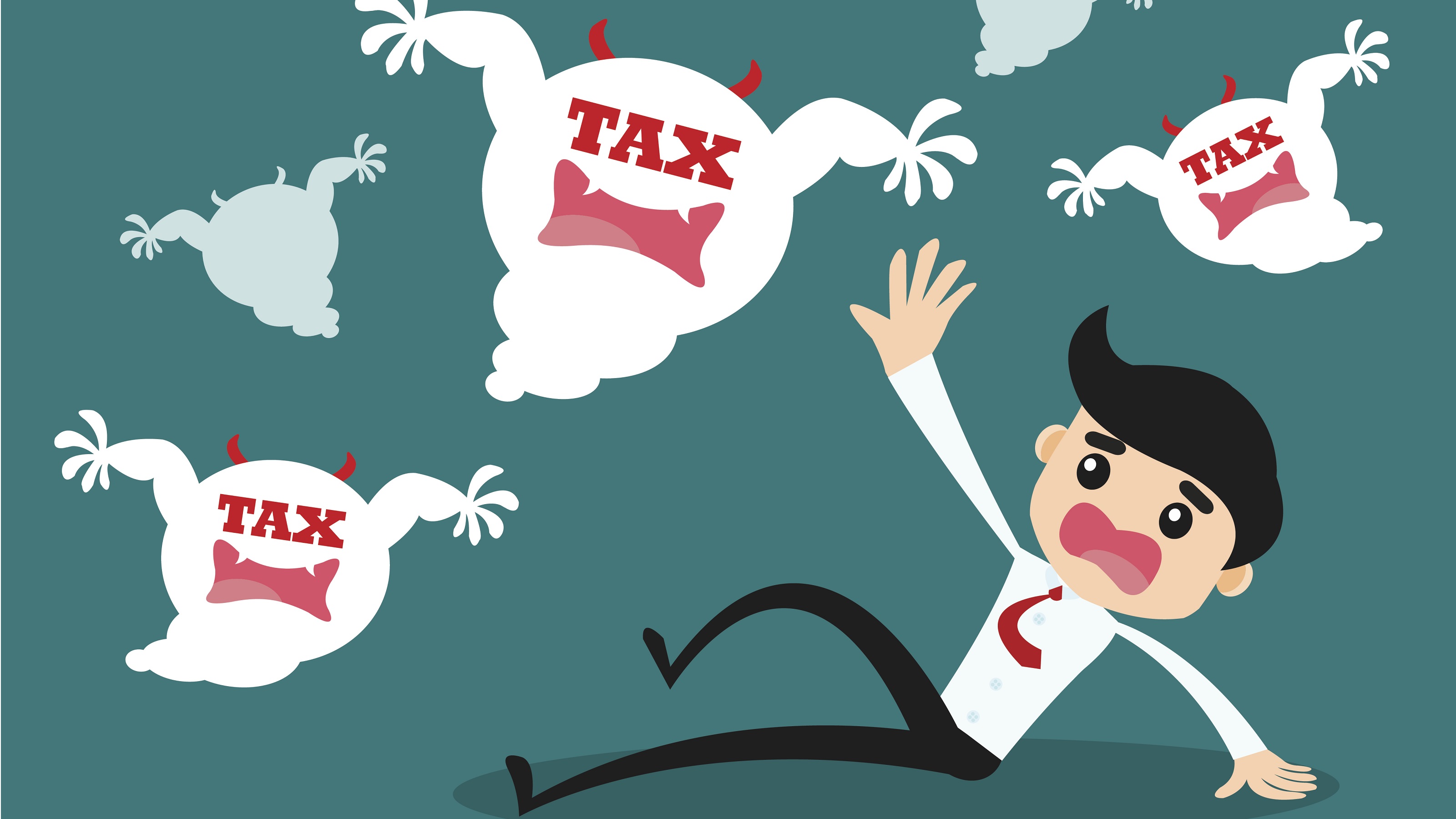How Big Does Your Nest Egg Really Need to Be?
Did you know there's an actual equation to figure out this crucial piece of the retirement puzzle? Find out how to do the math yourself to get a general idea of what to shoot for.


Anyone who has ever thought about retirement has surely asked themselves one basic question: How much do I need to have saved up? Unfortunately, the answer to this riddle is not simple nor one-size-fits-all. The amount depends on a variety of factors, and everyone’s calculation must be calibrated to their personal situation.
Many large financial companies have a hard time building an advertising campaign around a concept that is so complex and has so many moving parts. They’d rather just give you a target number that is probably big and scary. Why bother with the math equation part when it’s so much easier to say, “If you don’t have at least $2 million stashed away, you won’t be OK.”
Let’s call retirement what it really is: 20 to 30 years of unemployment. Fortunately, this type of unemployment can be planned for. Aimlessly accumulating savings in your retirement accounts to fund this goal is meaningless without directly basing it on your situation.

Sign up for Kiplinger’s Free E-Newsletters
Profit and prosper with the best of expert advice on investing, taxes, retirement, personal finance and more - straight to your e-mail.
Profit and prosper with the best of expert advice - straight to your e-mail.
Understanding this, let’s take a deeper dive into the Nest-Egg formula:
Nest Egg = Shortfall / Withdrawal Rate
First: Determine Your Shortfall
To solve for Nest Egg, let’s start by quantifying the shortfall input in three steps.
1. What are your lifestyle goals, and how much will you need to accomplish them?
I’m no longer surprised when people come in for financial advice and have never put together a household budget. Many have no idea how much they spend month to month or year to year. When a financial professional requests to see a budget, it doesn’t mean you’re in trouble; we need to know these numbers as an input to the financial-planning process. The budget may be the most important number in a financial plan. You need to be honest with yourself, because if you underestimate your budget in retirement, you will only get results that are rosier than reality.
My advice: Take your time and calculate your budget. There are two easy ways to help with this exercise. First, you can type “budget worksheet” in Google and pick one from the images section. The second way to calculate your budget is to take your net paycheck as it flows into your checking account, subtract any money you are saving into a savings account, non-qualified brokerage account or IRA — whatever is left over is your household budget, because if you are not saving, you are spending. Another behavior that I have noticed from retirees is that most people don’t change their lifestyle in retirement, so plan for that full lifestyle cost.
2. What are your sources of guaranteed income? Add them all up.
- Most Americans expect to collect Social Security benefits at some point in retirement. What they can’t be as certain of is what the Social Security program will look like by the time they get to the finish line and when (or if) they’ll see cost-of-living adjustments (COLA) that keep up with inflation. So, it’s important to make the most of these benefits with strategies that suit your family’s needs.
- The employer pensions that were once an important factor in nearly every retiree’s income plan are far less common than they used to be. If you are lucky enough to have one, be sure to understand if you have a COLA and how it works. Also, do your best to determine if your company will remain stable and whether your pension plan is secure.
- You may have other sources of income you’re counting on, such as rental income, which depends on occupancy, and annuity income that probably does not have a COLA. If so, be honest with yourself about how steady these income sources will be throughout your retirement.
3. What’s the shortfall?
If your guaranteed income streams aren’t enough to pay for your lifestyle goals — say you require $5,000 a month and your guaranteed income is $3,000 — you have a gap, or shortfall, of $2,000 per month. You’ll need to tap your nest egg to make up the difference. This $2,000 shortfall is the real number around which you should be building your withdrawal strategy — and your overall financial plan.
Next: Decide on a Withdrawal Rate
Next, we’ll need to determine our withdrawal rate.
For years, the “4% rule” reigned supreme as the measure for how much retirees could withdraw each year from their investment savings — with annual increases for inflation — and feel reasonably confident they wouldn’t outlive their retirement portfolio. For example, if you’d saved $400,000, under the 4% rule you could withdraw about $16,000 in the first year of your retirement.
It should be noted that while the 4% rule is a good place to start, it has some problems — mostly because it makes certain assumptions based on historical data that doesn’t necessarily apply to today’s marketplace.
The old 4% rule would be great if we were in a perfect world where you knew you could get a magical 7% rate of return every single year; unfortunately, we live in an environment that’s volatile, and I feel investors should prepare themselves for markets that could be up 10% one year and down 20% the next.
However, the 4% rule is simple and, I believe, still a good starting point — a guideline, not a rule — for retirement planning. It is meant to get you in the ballpark.
Now Do the Math
Now, let’s jump back in time to eighth-grade algebra class. We can solve for Nest Egg by taking our annual shortfall of $24,000 and dividing by our 4% withdrawal rate, yielding a result of $600,000. That’s what you’d need to have saved, under these assumptions. It is not quite as daunting as the $2 million figure we cited earlier, but it’s not chump change either.
Once you have this starting-point calculation, I highly recommend talking to your financial adviser about running a stress test to see how your investments would react through a serious downturn or long-running bear market. Then, make the necessary changes to secure the lifestyle you want to live in retirement.
Kim Franke-Folstad contributed to this article.
Get Kiplinger Today newsletter — free
Profit and prosper with the best of Kiplinger's advice on investing, taxes, retirement, personal finance and much more. Delivered daily. Enter your email in the box and click Sign Me Up.

Tony Zabiegala helped found Strategic Wealth Partners and serves as vice president. He is an Investment Adviser Representative and licensed insurance professional. He believes in providing clients with the highest level of proactive wealth management guidance possible. Zabiegala spends most of his days developing innovative long-term financial strategies, one client at a time. He holds a B.S. in Civil Engineering from Cleveland State University.
-
 Could a Golden Visa Be Your Ticket to Retiring Abroad?
Could a Golden Visa Be Your Ticket to Retiring Abroad?Trump and DOGE are weighing a U.S. "Gold Card" that would let the wealthy emigrate to the U.S. for a fee. But golden visas have been around for years worldwide. Here's how they work.
-
 Running Out of Money in Retirement: Nine Steps to Reduce the Risk
Running Out of Money in Retirement: Nine Steps to Reduce the RiskQuit worrying about money and enjoy a carefree retirement. Sounds good, right? Well, if you follow these nine steps from a financial adviser, you could be on your way to that goal.
-
 Running Out of Money in Retirement: Nine Steps to Reduce the Risk
Running Out of Money in Retirement: Nine Steps to Reduce the RiskQuit worrying about money and enjoy a carefree retirement. Sounds good, right? Well, if you follow these nine steps from a financial adviser, you could be on your way to that goal.
-
 I'm a Financial Planner: Here Are Five Lesser-Known Ways to Avoid Estate Tax
I'm a Financial Planner: Here Are Five Lesser-Known Ways to Avoid Estate TaxThe clock is ticking on the estate and gift tax provisions in the Tax Cuts and Jobs Act, so the sooner you act on removing assets from your estate, the better.
-
 Is a Silent Wealth Killer Stalking Your Retirement?
Is a Silent Wealth Killer Stalking Your Retirement?Poor tax planning can drain your retirement of tens or even hundreds of thousands. Stop the bleeding with a laser focus on tax efficiency.
-
 Put Time on Your Side With This Simple Retirement Strategy
Put Time on Your Side With This Simple Retirement StrategyA financial professional recommends thinking in terms of three financial stages — active years, slower-paced years and later years — assigning each one a unique bucket of investments.
-
 Five Opportunities if You're in the 2% Club in Retirement
Five Opportunities if You're in the 2% Club in RetirementIf you're among the 2% of the population with both a pension and $1 million or more saved, you're in a unique yet complex position as you approach retirement.
-
 I'm an Insurance Expert: This Is How You Get the Right Insurance Coverage at the Right Price
I'm an Insurance Expert: This Is How You Get the Right Insurance Coverage at the Right PriceFirst, you have to know what you want and ask the right questions of the right professional. This insurance pro explains exactly how to do that.
-
 Four Tips for Mastering a Financial Security Mindset
Four Tips for Mastering a Financial Security MindsetThis financial professional's mom helped him learn that financial security is more than making money — it's about cultivating a mindset that will help you stick to an investment plan even when times get tough.
-
 Lessons to Be Learned From a $1 Billion Divorce
Lessons to Be Learned From a $1 Billion DivorceAn estate planning attorney notes that an oil executive’s billion-dollar divorce could have turned out very differently if the couple had a premarital agreement and the executive had used asset protection trusts.